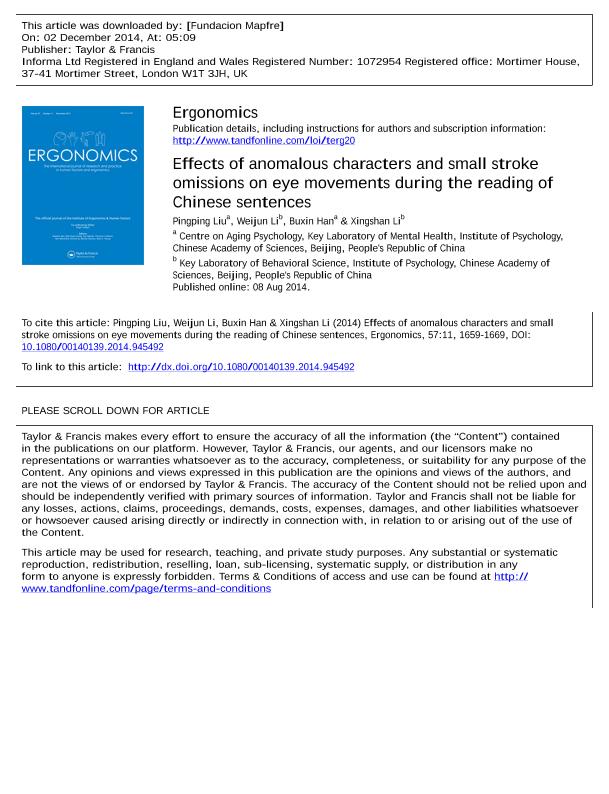Effects of anomalous characters and small stroke omissions on eye movements during the reading of Chinese sentences

Contenido multimedia no disponible por derechos de autor o por acceso restringido. Contacte con la institución para más información.
| Tag | 1 | 2 | Valor |
|---|---|---|---|
| LDR | 00000cab a2200000 4500 | ||
| 001 | MAP20140045556 | ||
| 003 | MAP | ||
| 005 | 20141203104159.0 | ||
| 008 | 141202e20140311esp|||p |0|||b|spa d | ||
| 040 | $aMAP$bspa$dMAP | ||
| 084 | $a875 | ||
| 245 | 0 | 0 | $aEffects of anomalous characters and small stroke omissions on eye movements during the reading of Chinese sentences$cPingping Liu...[et.al] |
| 520 | $aWe investigated the influence of typographical errors (typos) on eye movements and word recognition in Chinese reading. Participants' eye movements were tracked as they read sentences in which the target words were presented (1) normally, (2) with the initial stroke of the first characters removed (the omitted stroke condition) or (3) the first characters replaced by anomalous characters (the anomalous character condition). The results indicated that anomalous characters caused longer fixation durations and shorter outgoing forward saccade lengths than the correct words. This finding is consistent with the prediction of the theory of the processing-based strategy. Additionally, anomalous characters strongly disrupted lexical processing and whole sentence comprehension, but small stroke omissions did not. Implications of the effect of processing difficulty on forward saccade targeting for models of eye movement control during Chinese reading are discussed. | ||
| 773 | 0 | $wMAP20100019818$tErgonomics : the international journal of research and practice in human factors and ergonomics$dOxon [United Kingdom] : Taylor & Francis, 2010-$x0014-0139$g03/11/2014 Volumen 57 Número 11 - noviembre 2014 |

